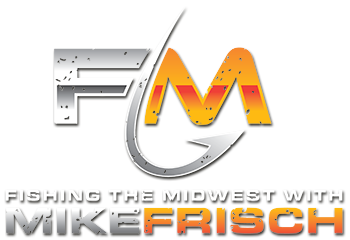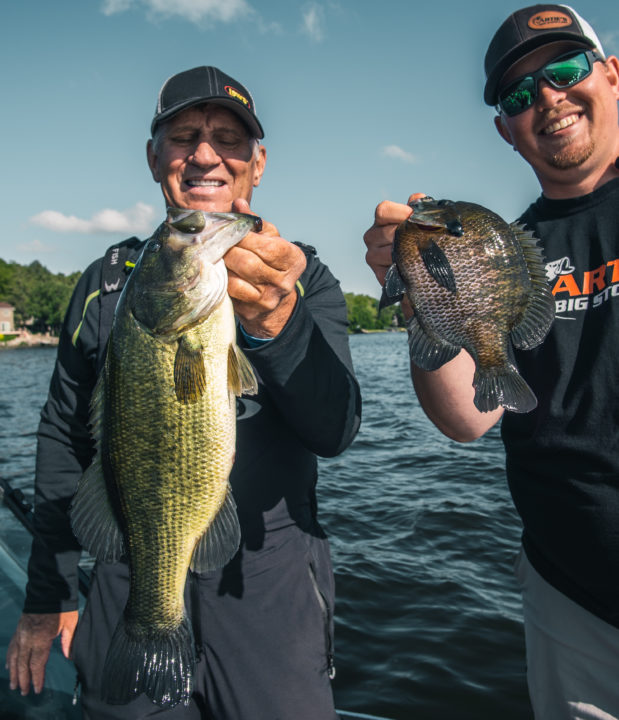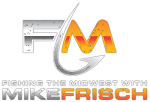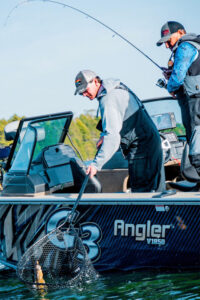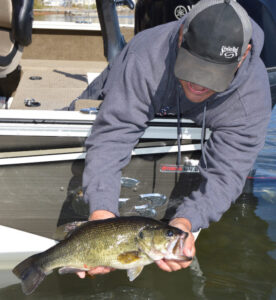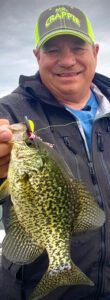by Bob Jensen
The bite is on! The summer months are when most people go fishing, and the action can be fast. Most fish are constantly looking for something to eat at this time of year, and they’ll look for that something to eat in a variety of places. Their prey can be in deep water, shallow water, or suspended somewhere between the surface and the bottom. Places that an angler can count on to hold fish are weedlines and weedbeds. Across North America, a variety of fish will call areas of vegetation home throughout the summer and fall months.
When we think of weeds, often we think of undesirable vegetation. Weeds in the backyard might be undesirable, but the weeds that fish like to be around are very desirable. Cabbage and coontail are fish attracting types of weeds in many places, and where they grow has changed in recent years. Due to increased water clarity, light from the sun penetrates deeper into the water, which allows vegetation to grow in deeper water. In some lakes where the deep weedline was once in ten feet of water, it’s now in water fifteen feet deep. Waters have become clearer due to zebra mussel population increases and fewer pollutants.
The vegetation can be located a couple of ways. You can visually see the shallower stuff, and sonar can reveal the deeper weedbeds and edges. Almost every predator species of fish that lives in lakes that have cabbage or coontail will visit that area of vegetation regularly.
Early and late in the day or on cloudy days, largemouth bass will spread out over the tops of the weeds. During the day, they’ll burrow into the weeds or hold on the deep edge of the weeds.
Walleyes, northern pike, muskies, and panfish will all gather on the edge of the weeds. Sometimes the panfish will suspend a short distance from the deep weed edge. Crappies or ‘gills can often be seen dimpling the water’s surface as they feed on bugs.
This is fun fishing. You never know what’s going to eat your bait, but much of the time, you’re going to get bit regularly. You might catch a few bass, then a walleye, next a pike or crappie, then a few more bass. You might even catch a musky.
Several lure styles will catch these vegetation related fish. Start with a crankbait. They’ll take the more aggressive fish. A Pro Model Crankbait, a KVD Squarebill, or a Salmo Hornet will appeal to bass, pike, and walleyes. #4’s or #5’s are usually good sizes to start with. Bluegill, perch, or blue/chartreuse are productive colors in many locations.
A somewhat new bait that has been very productive over and along the weeds is a Thunder Cricket vibrating jig. Reel’em fast, reel’em slow, and every now and then, reel it fast, quit reeling, then start reeling again. Sometimes that stop and go retrieve is what they want.
After working an area with the crankbait or vibrating jig, try a jig/plastic. Some very successful anglers like a four inch worm, other very successful anglers prefer something bigger and bulkier. It’s hard to beat an Ocho worm on a sixteenth, eighth, or three-sixteenth’s ounce jighead.
Summer is a time of plenty in a body of water. There’s lots of food, but there are also lots of hungry fish. If you’re looking for a bent rod now and until freeze-up, a weedline or weedbed is an outstanding place to start,,,and finish.
